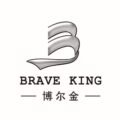
Laser cutter for metal, as an innovative processing technology, is creating a revolution in the metal processing industry. It can accurately cut different types of metal materials by concentrating high-energy laser beams, and is widely used in many fields such as automobile manufacturing and construction engineering. Compared with traditional cutting methods, laser cutting has higher precision, lower scrap rate and faster cutting speed, which greatly improves production efficiency.
Although the advantages of laser cutter for metal cannot be ignored, it still faces some challenges in actual use. First, the initial investment in equipment is high, and many small businesses may be hesitant because of this. Secondly, operating a laser cutting machine requires a high technical threshold, and inexperienced operators may affect the cutting effect. In addition, although laser cutting performs well on thin metals, the improvement of its efficiency and effect when processing thicker metals is still the direction of technical improvement.
Advantages of precision cutting and low maintenance
- Laser cutter for metal has extremely high cutting accuracy, which can finely cut metal materials and achieve precise dimensional control. The focus of the laser beam is very small, which can complete high-precision cutting operations at millisecond speeds, ensuring that each cut surface is straight or curved, smooth and flat, and no secondary processing is required.
- Since laser cutting is a non-contact process, the metal material will not be physically contacted during the cutting process, so it will not deform or leave scratches. This makes laser cutting particularly suitable for metal parts that require extremely high surface quality and can ensure the perfect surface of the product.
- In addition, the application range of laser cutter for metal is very wide, and it can handle metal materials from thin to thick and of different hardness. It can handle various metals such as stainless steel, aluminum, titanium alloy, etc., to meet the diverse needs of different industries for metal processing.

Cutting effect is limited, trade-off between speed and thickness
- When it comes to laser cutter for metal, many people think of its accuracy, but we cannot ignore its speed limitations in certain situations. If your work is high-efficiency, high-volume production, the laser cutter may slow down the entire production process, especially when fast cutting is required.
- In addition, the effect of laser cutting will be compromised for particularly thick metals. Although some high-powered laser cutters can handle thicker metals, their cutting speed will be greatly slowed down, and the heat-affected zone of the metal will also expand, which may lead to reduced cutting quality. For those cutting tasks of thick metal materials, other methods, such as plasma cutting or water jet cutting, may be needed to achieve higher efficiency and more stable results.
Technological innovation and operational optimization go hand in hand
- To solve the disadvantages of laser cutting machines in metal processing, we must not only rely on technological innovation, but also need operational optimization. First of all, with the continuous advancement of laser technology, the new laser cutter for metal uses a more precise laser source and advanced optical system, which enables it to maintain high efficiency and high precision when cutting complex shapes and thick metals. The efficient cooling system can also effectively reduce the thermal impact of high-power laser cutting, avoid metal deformation, and ensure cutting quality.
- But relying solely on equipment innovation is not enough, the proficiency of operators is also crucial. Through training, operators can master how to adjust the settings of the laser cutting machine according to the properties of different metals, thereby improving work efficiency and cutting quality. With the continuous improvement of laser cutting technology and operation level, the disadvantages of laser cutter for metal will gradually be overcome and become the mainstream choice in many industrial fields.
Consider your needs and budget and make a wise choice
When choosing a laser cutter for metal, you first need to consider the specific needs of the company. Different metal processing tasks have different requirements for the accuracy, power and speed of the cutting machine. For small businesses or users who are new to laser cutting, it is a wise choice to choose a comprehensive and cost-effective device. In addition to cutting accuracy and speed, ease of operation is also an important factor in deciding whether to choose the device. Especially for beginners, a laser cutting machine that is easy to learn and maintain will greatly improve work efficiency and reduce potential problems.
At the same time, budget is also a factor that cannot be ignored. Although high-performance laser cutting machines are usually more expensive, they can bring higher work efficiency and more accurate cutting results. For start-ups or companies with limited budgets, choosing a medium-priced laser cutter for metal may be a more appropriate solution. When choosing, the cost of subsequent maintenance and consumables of the equipment should also be considered. Through comprehensive consideration of all aspects, choosing a laser cutting machine that suits your needs can get the best return on investment in long-term use.


